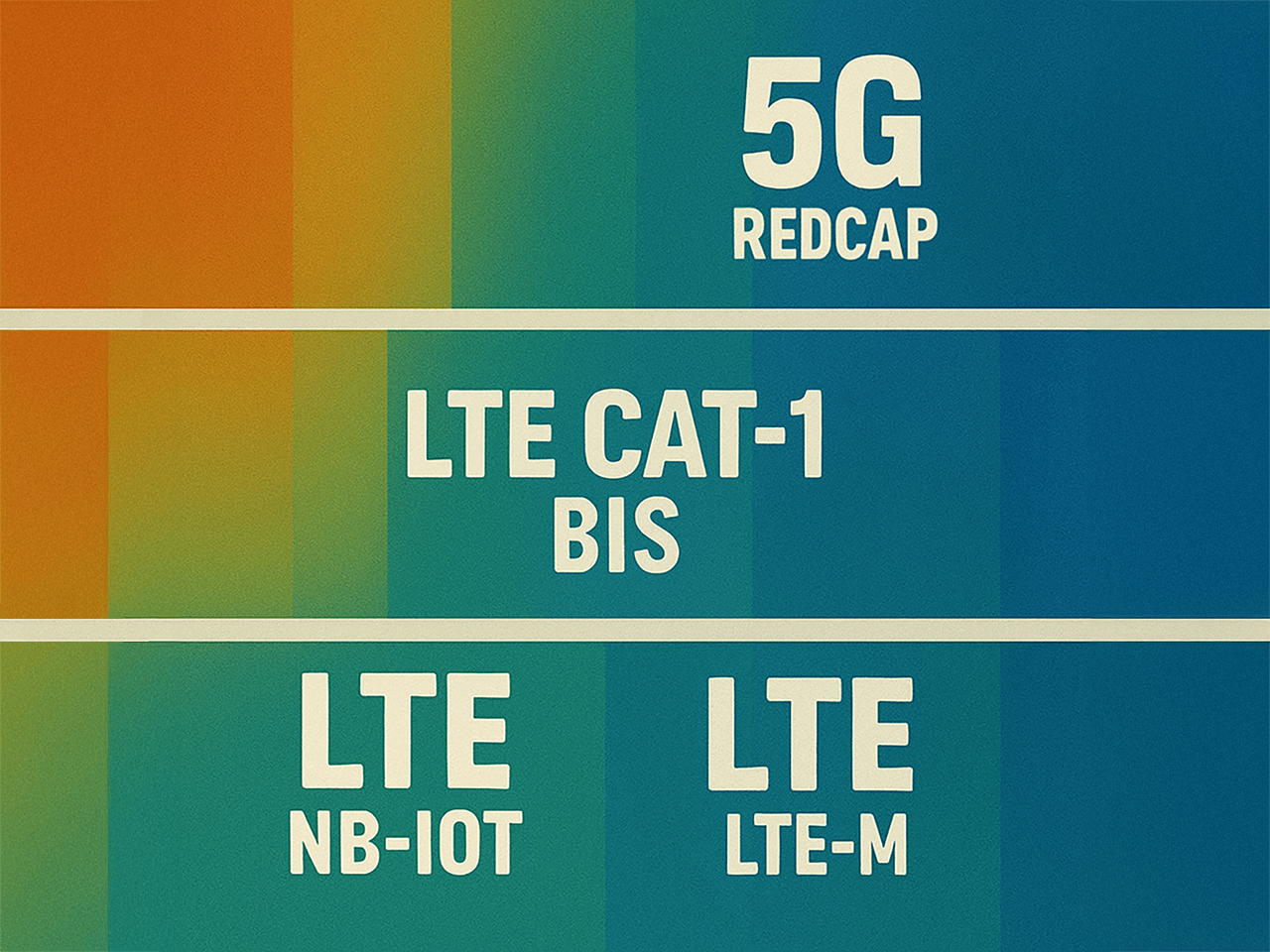For embedded/IoT developers, choosing the right cellular IoT connectivity technology is always a trade-off: bandwidth, latency, power, and cost are all considerations that can be difficult to balance. While 5G grabs the headlines in consumer mobility, it's not what most connected devices actually need (at least not today).
Right now, LTE Cat-1 bis is emerging as a sweet spot for many IoT applications. It's widely available (if you have LTE access, you already have LTE Cat-1 bis access!), affordable, and doesn't demand the design complexity or cost overhead of higher-speed 5G cellular tech.
The best part? An updated series of Blues Notecards that support LTE Cat-1 bis have completed beta testing (and yes, we love them!).
Check out the LTE Cat-1 bis Notecard Cellular and Notecard Cell+WiFi in the Blues store.

| SKU/Datasheet | General Region | Modem | Wi-Fi |
|---|---|---|---|
| NOTE-MBGLN | GL - Global | Quectel EG916Q-GL | No |
| NOTE-MBGLW | GL - Global | Quectel EG916Q-GL | Yes |
| NOTE-MBNAN | NA - North America | Quectel EG915Q-NA | No |
| NOTE-MBNAW | NA - North America | Quectel EG915Q-NA | Yes |
5G Isn't Ready for the IoT (Yet)
5G has captured popular consumer interest with its speed and ever-expanding reach. And for good reason — 5G was designed for ultra-low latency and high throughput (think augmented reality, autonomous driving, and lag-free video streaming apps). However, today's IoT devices don't need any of that. What they need is reliable coverage, low power draw, and inexpensive modules. 5G modules are still expensive, draw more power, and rely heavily on standalone networks for advanced features like network slicing. In most regions, those networks aren't even fully rolled out.
Also, 5G radios are complex and often overkill for sensors, meters, or asset trackers that just need to send a few KB of data (or less) every hour, day, or week. For developers, 5G means more design constraints, harder certification, and a shorter battery life.
LTE Cat-1 bis: The Right Tool, Right Now
LTE Cat-1 bis is an optimized version of LTE Cat-1 that uses a single antenna. That might sound like a downgrade, but for many IoT use cases, it's a win. The single antenna requirement simplifies the RF design, reduces BOM cost, and lowers overall power consumption - all without giving up the advantages of LTE Cat-1 coverage and performance.
With downlink speeds up to 10 Mbps and uplink around 5 Mbps, Cat-1 bis is more than capable of handling massive firmware updates, delivering larger data payloads, and providing more responsive command/control capabilities. It's already widely supported (even better than NB-IoT and LTE-M which still have patchy availability depending on the region).
Not to mention, it looks like NB-IoT is headed towards end-of-life.
LTE Cat-1 bis module pricing also hits a sweet spot: they are significantly cheaper than 5G modules and, thanks to the simplified antenna requirement, are a better fit for compact and/or cost-sensitive designs. Case in point, the new "midband" Blues Notecard Cellular starts at $49 and draws significantly less power than other Notecards.
Hope for a 5G IoT Future: Enhanced RedCap
The future of cellular IoT in the 5G world most likely belongs to Enhanced RedCap. Effectively a reduced-capability version of 5G, think of Enhanced RedCap as a streamlined 5G for devices that don't need full-blown 5G throughput. It targets wearables, industrial sensors, and other mid-tier devices — any device that requires better latency and performance than LTE-M, LTE Cat-1, or even LTE Cat-1 bis, but at lower complexity than the full 5G spec.
But we're not there yet. Module costs for Enhanced RedCap are still high (if they are available at all outside of sample kits), and power consumption needs further optimization.
Until both silicon and network maturity catch up, Enhanced RedCap is more roadmap than reality.
Brief Comparison of LTE Cat-1 bis and Enhanced RedCap
Let's break down the pros and cons of using LTE Cat-1 bis or Enhanced RedCap:
| Feature | LTE Cat-1 bis | Enhanced RedCap (5G) |
|---|---|---|
| Downlink Speed* | Up to 10 Mbps | ~85 Mbps (early target) |
| Uplink Speed* | Up to 5 Mbps | ~15-25 Mbps |
| Module Availability | Widely available | Samples only |
| Network Availability | Mature global LTE | Limited |
| Power Usage | Moderate, optimized | Higher (not yet optimized) |
| Antenna Design | Single antenna | Multiple antenna support |
| Module Cost | Low | High (for now) |
* This author would argue that throughput (i.e. downlink/uplink speeds) is not overly critical for the vast majority of IoT scenarios, both today and in the foreseeable future.
Bottom Line
If you're designing cellular IoT devices today, LTE Cat-1 bis should be your default, unless you have a strong reason to justify another path (e.g. if you're more comfortable with Cat-1 or have reliable LTE-M coverage in your deployment regions). LTE Cat-1 bis is available today in all regions with LTE coverage, it's proven, and it does a great job of balancing cost, performance, and power consumption. Keep an eye on Enhanced RedCap of course, but it'll be some time before it's something to build a product around.
The future of 5G in IoT is coming. It's just not here yet though — and LTE Cat-1 bis fills that gap better than anything else right now.
Get started on your cellular IoT journey with the Blues Starter Kit for Cell+WiFi 💙.


